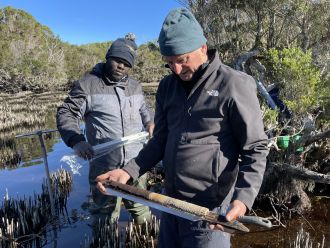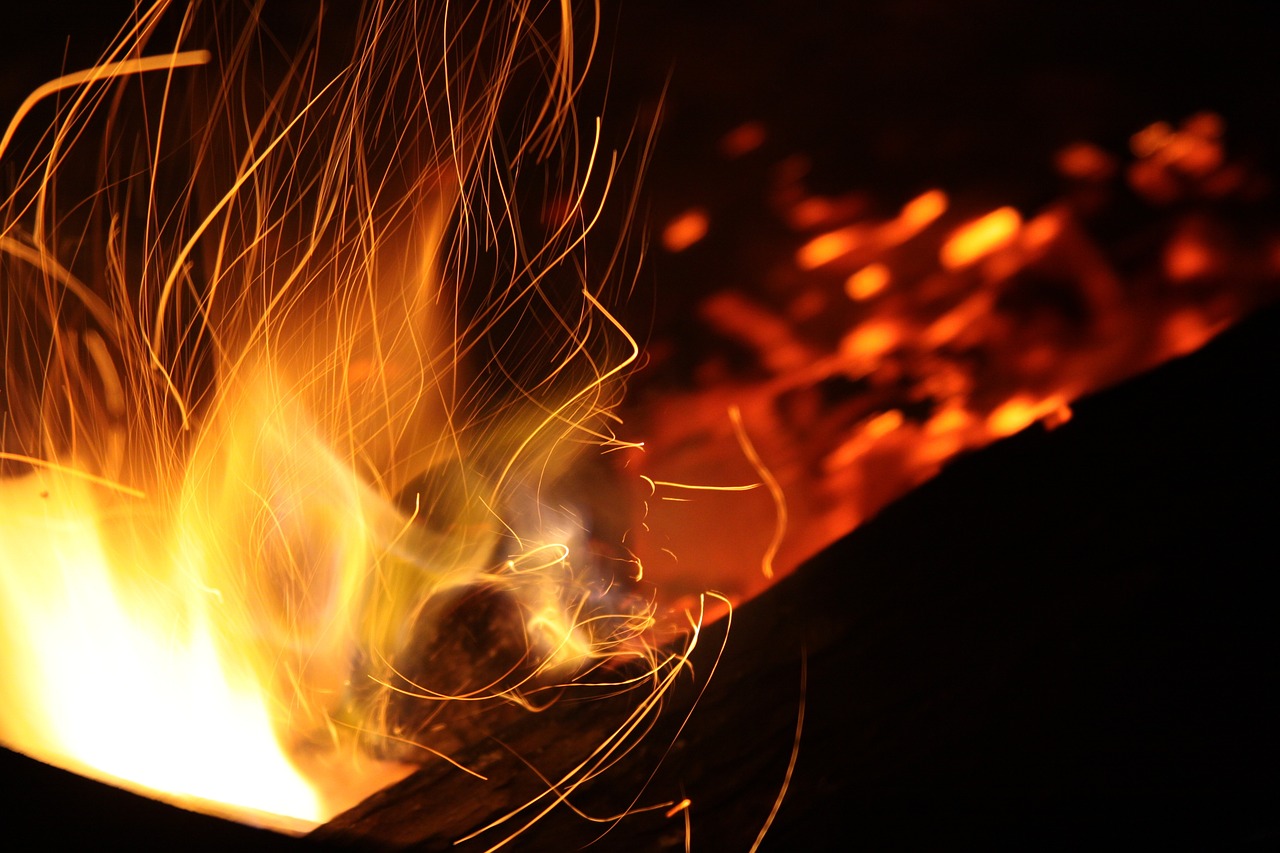Media release
From:
Some of the first humans to arrive in Tasmania, over 41,000 years ago, used fire to shape and manage the landscape, a new study from The Australian National University (ANU) and the University of Cambridge has found.
It is thought to be the earliest and most detailed record of humans using fire in the Tasmanian environment.
According to the researchers, early inhabitants of Tasmania were managing forests and grasslands by burning them to create open spaces, possibly for food procurement and cultural activities.
The team analysed traces of charcoal and pollen contained in ancient mud that showed how Indigenous Tasmanians (Palawa) shaped their surroundings and cared for Country over thousands of years.
Co-author and ANU palaeoecologist, Professor Simon Haberle, said the study provided important new details about life in Tasmania many centuries ago.
“Palaeoecological records show that Palawa people burned wet forest to first settle in Tasmania, as indicated by a sudden and unprecedented increase in charcoal accumulated in ancient mud 41,600 years ago,” he said.
“Earlier studies have shown that Aboriginal communities on the Australian mainland used fire to shape their habitats, but we haven’t had such detailed and deep-time records this part of Tasmania until now.”
The researchers studied ancient mud taken from islands in the Bass Strait, which is part of Tasmania today, but would have been part of the land bridge connecting Australia and Tasmania in the past.
According to study lead author Dr Matthew Adeleye, who completed his PhD at ANU and is now based at the University of Cambridge, Indigenous Tasmanians used fire as a tool to promote the type of vegetation or landscape that was important to them.
“As natural habitats adapted to cultural burning, we see the expansion of fire-adapted species such as Eucalyptus, primarily on the wetter side of the Bass Strait islands,” Dr Adeleye said.
According to the researchers, the findings provide further insight into the long-standing connection Indigenous peoples have to Country.
Professor Haberle said a greater understanding of this relationship is important for landscape management in Australia today and could also assist in defining and restoring cultural landscapes.
“These early Palawa communities were the island’s first land managers,” Professor Haberle said.
“To protect Tasmanian and Australian landscapes for future generations, it’s vital that we listen and learn from Indigenous communities who are calling for a greater role in helping to manage Australian landscapes into the future.”
The research is published in Science Advances.
Multimedia




 Australia; International; VIC; TAS; ACT
Australia; International; VIC; TAS; ACT



